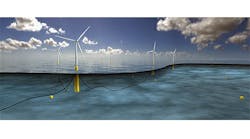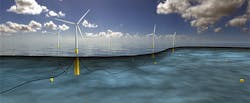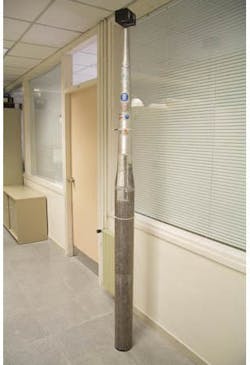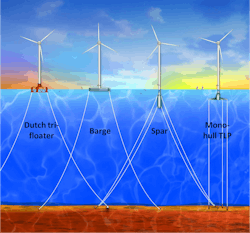âStatoil recently revealed plans to set up five of its Hywind cylindrical-float turbines in what’s deemed as the first floating wind farm. The project is expected to be finished by late 2017 and will be located 30 km off the coast of Scotland.
In 2009, the first floating wind turbine was erected 10 km off the coast of Norway by Statoil for proof of design in the Hywind project. The float consists of a stainless-steel cylinder, or a spar buoy, with water and stone ballast to bring the float 100 m below the surface and stabilize it in rough waves. It is tethered to the ocean floor with cables.â
Statoil has invested more than $71 million USD since the beginning of the project in 2001, and like most companies that invest in the wind industry, it continues to look for cost-effective solutions to make floating farms a viable market in the energy sector. To this end, projects such as the Alternative floating offshore substructure for offshore wind farms (AFOSP) project, sponsored and funded by Europe’s KIC InnoEnergy, challenges innovators to create cost-effective design solutions for turbine floats to bring wind technology to the forefront of renewable energy markets.
A New Material in Float Design
Under the guidelines of AFOSP, Climent Molins and Alexis Campos of the Department of Civil and Environmental Engineering at the Universitat Politècnica de Catalunya (UPC), Barcelona, Spain, present Windcrete, a floating cylindrical base that has a concrete, rather than steel, structure. They claim concrete improves weatherability and cut costs by half when compared to the steel design used in the Hywind floating turbine. The team Windcrete has been patented, and the team is in the process of commercializing it for use in future wind farms.
With the concrete design, the UPC team expects to reduce the price of construction by 60% and deliver a service life of 50 years with minimal maintenance. After testing the prototype in the lab, they say that the low-maintenance, uniform design will reduce energy costs to 12 cents per kilowatt-hour.
If cost reduction is possible for floating wind farms, that could open the door to a number of benefits. For example, floating turbines are not limited by ocean depth, so they can be located further out to sea, where winds tend to be stronger. They will also lower material costs relegated to securing the turbine to the ocean floor.



